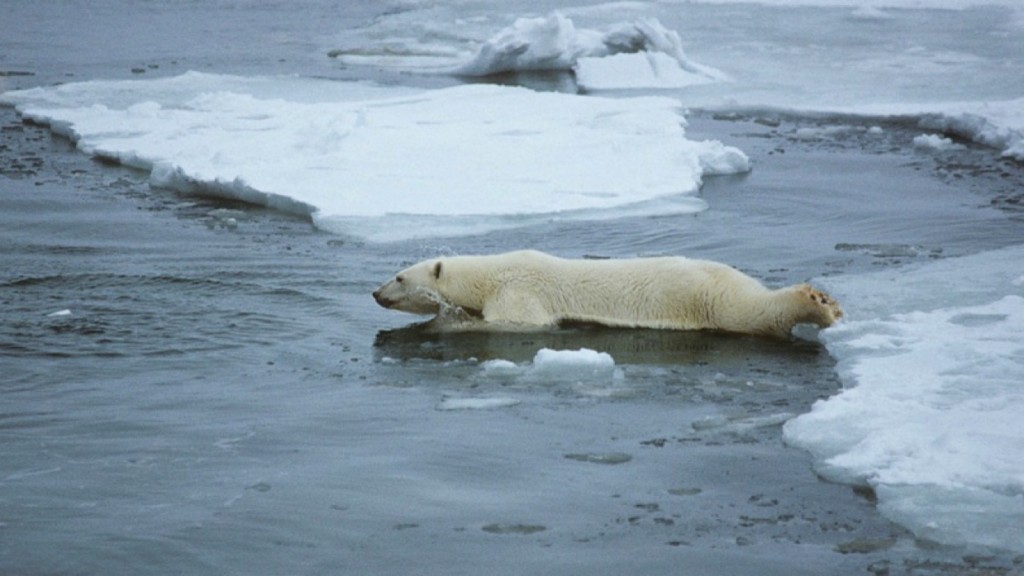By now, you’ve probably seen polar bears exploring on top of the Tundra Buggy, searching for food under the snow, and standing up to fight on their hind legs. This is all part of the life of a polar bear. But what about all those pictures we see of polar bears in the ocean? What connection do they have to the water?
Polar Bears are inherently connected to the ocean, and the icy climate of the Arctic is essential to their survival. We see images from the wild of these bears eating seals and swimming in the chilly water next to giant ice flows all the time, providing evidence that without the bounty of the sea, these white giants would have a difficult time finding enough food year-round to survive.
The typical habitat range of polar bears coincides with the Arctic sea ice extent, as they stay near the edge of the sea ice in order to be able to hunt seals from floating ice sheets. The bears are found further inland when there is no sea ice to use for hunting (during the warmer months of the year), and migrate out to the ice once it begins to form. Until the migration happens, bears spend their days eating vegetation on land and conserving energy until it’s time to return to the ocean and hunt!
Watch the Polar Bear cameras on explore.org to see their activity on the tundra near Hudson Bay until the sea ice begins to form.



